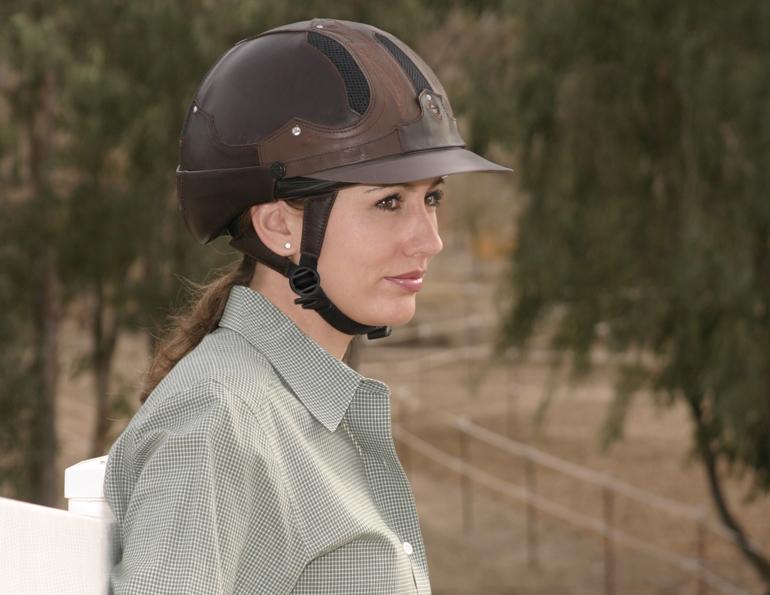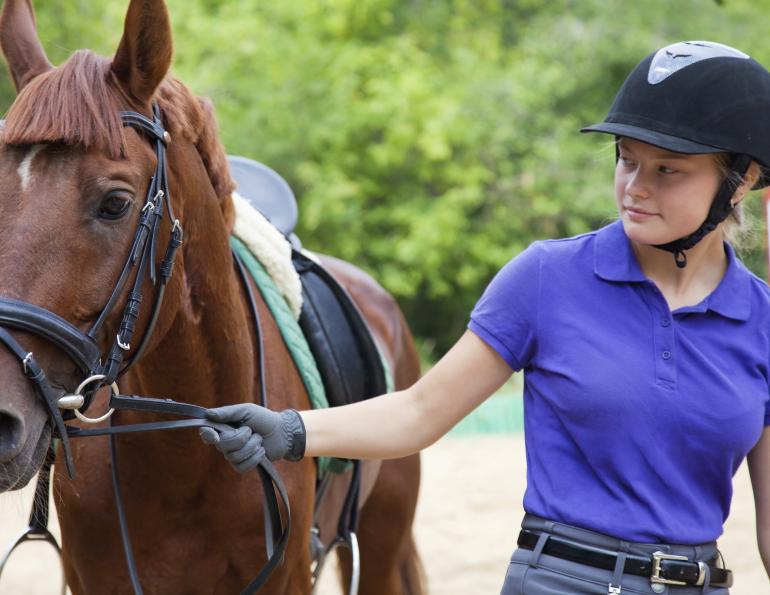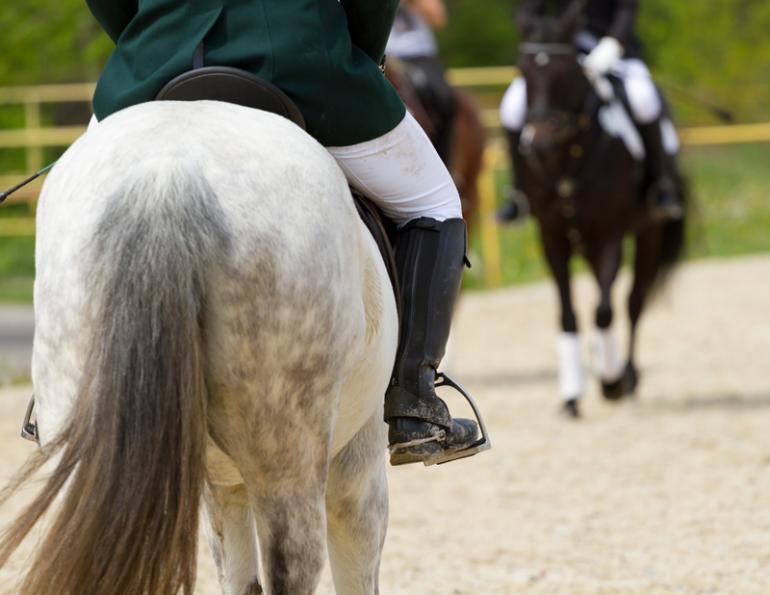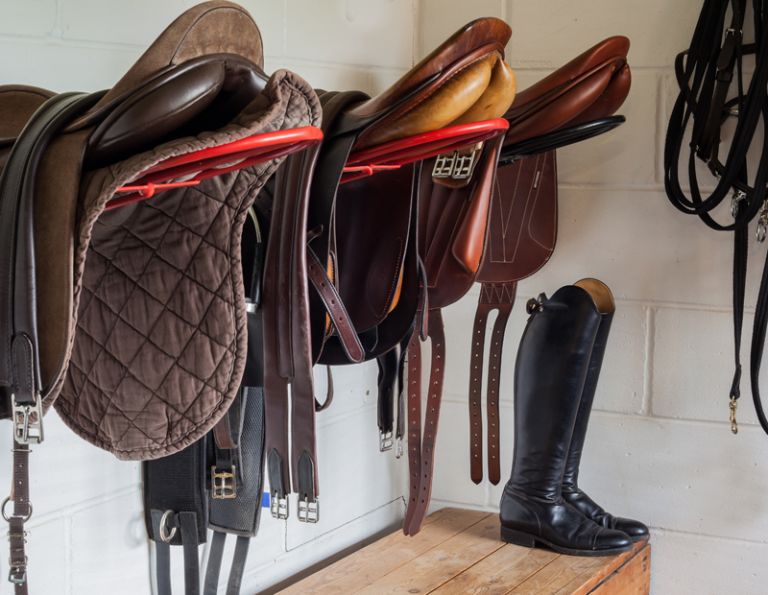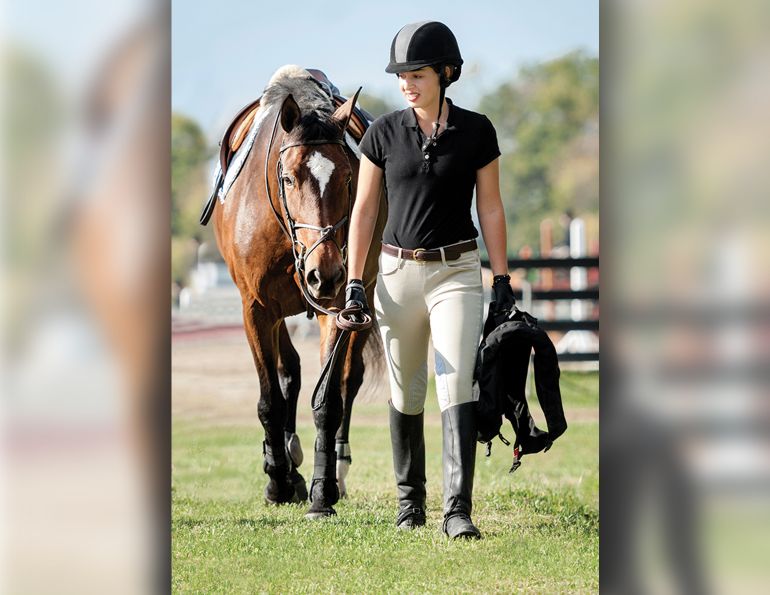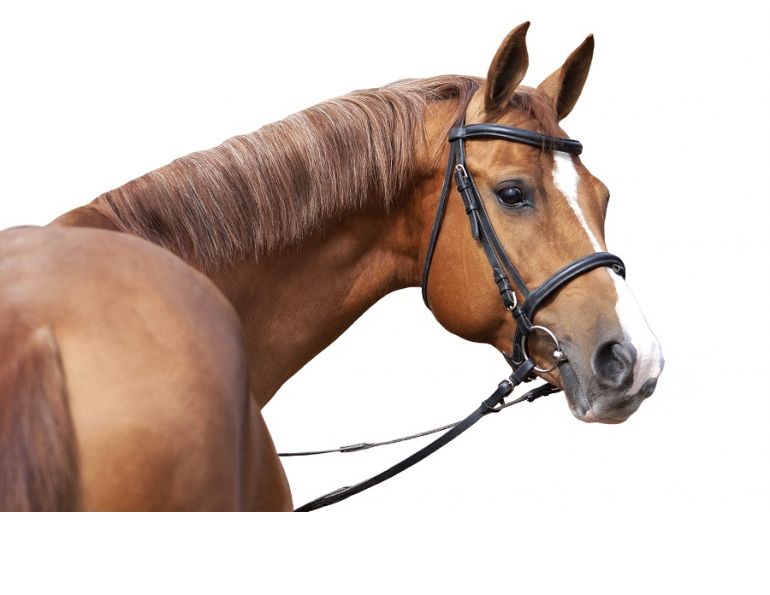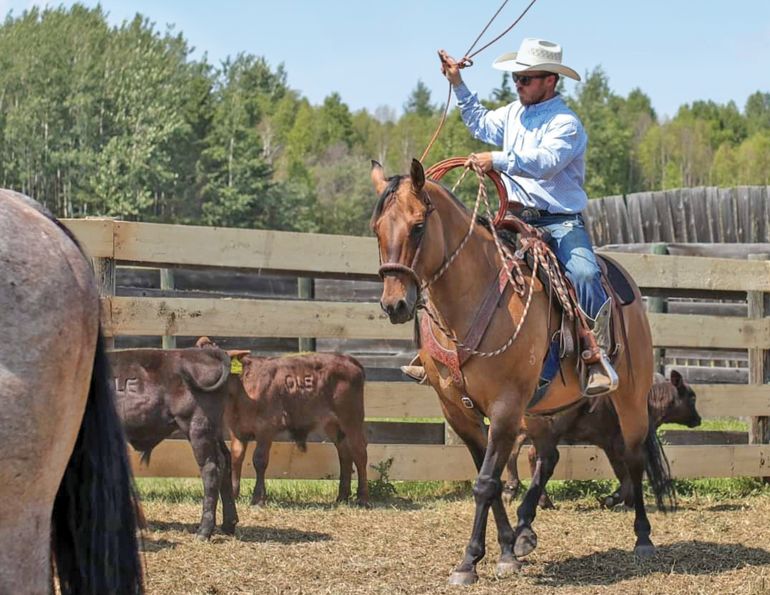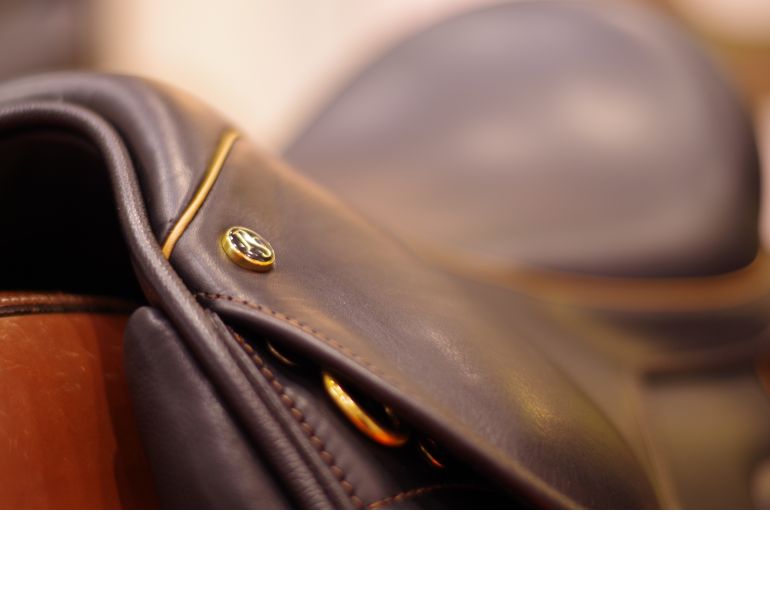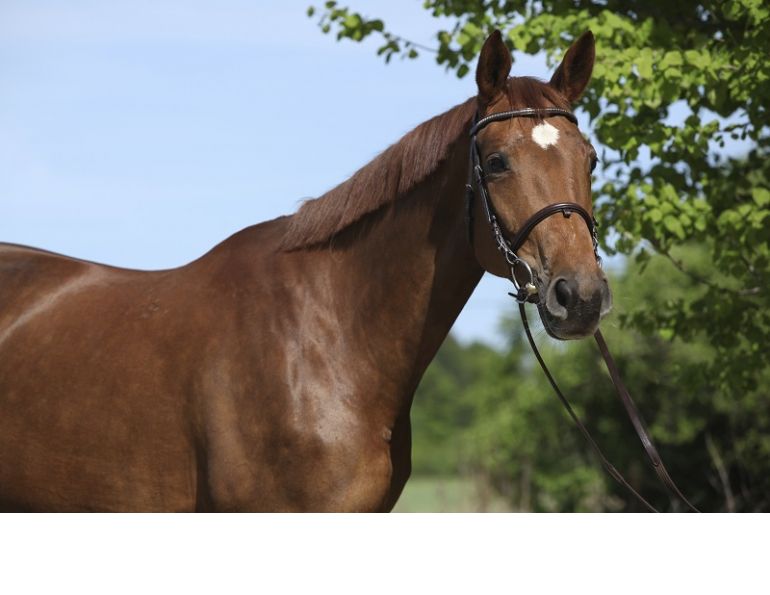By Jessica Adcock
As an experienced rider, you know that falls and injuries are a very real possibility whether you are training or competing. However, statistics on head injuries are pretty sobering.
In the report “Ten years of major equestrian injury: are we addressing functional outcomes?” published in the February 2009 issue of the Journal of Trauma Management & Outcomes, lead author Jill Ball and a team of health professionals with the University of Calgary, the Foothills Medical Centre and the Calgary Health Region explored the outcomes of severe and serious equestrian injuries. Selecting a study period from 1995 to 2005, they reviewed all trauma patients and identified 151 injured when horse riding. Ten died, all from catastrophic head injuries. Of the remaining 141, all had a mean Injury Severity Score (ISS) of 20 (major trauma) as a direct result of their injuries.
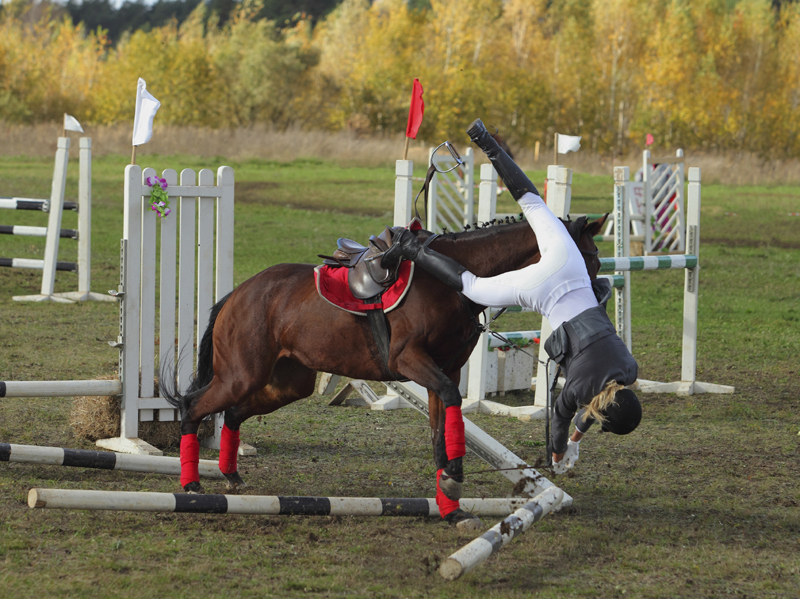
Three out of every five equestrian accident deaths are caused by brain injuries. A proper helmet can greatly reduce the risk of a catastrophic head injury. Photo: ©ISTOCK.COM/horsemen
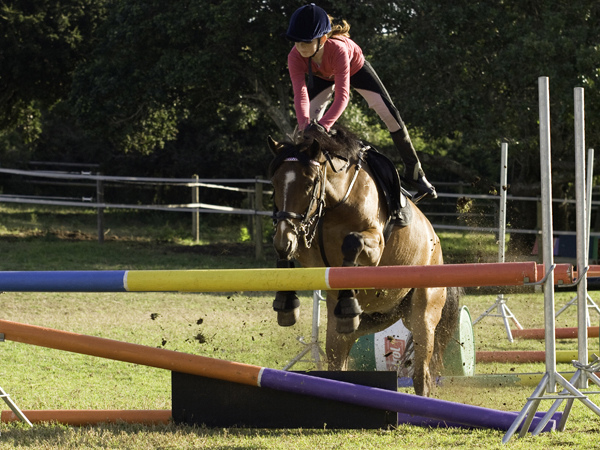
When horse and rider part company, the rider’s head is usually first to hit the ground. Photo: ©Riaan Labuschagne/Flickr
According to the Brain Injury Alliance of Kentucky, hospital emergency rooms in the U.S. treat approximately 70,000 equestrian related injuries, three of every five equestrian accident deaths are due to brain injuries, and there is a four-fold increase in mortality for injured, non-helmeted riders. Of all injuries caused by large animals that are treated by trauma units, horses are responsible for more than half, and approximately one-third of these are brain or head injuries.
According to Horse Council BC, a human skull can be shattered on impacts of 7 to 10 kilometers per hour (kph) and a horse can gallop at over 60 kph. A fall from just two feet can cause brain injury, yet when sitting on a horse, the rider’s head is at least eight feet above the ground. If a horse bucks the rider off, she is often torpedoed head first to the ground. A study published in the journal Nature in 2002 stated that head injuries outnumber spinal injuries five to one.
A proper helmet can drastically reduce the chance of a head injury. When the United States Pony Club tightened its regulations for headgear, concussions were reduced by 29 percent and head injuries by 26 percent during the following two years.
Although no helmet can protect every rider from injury under every circumstance, the benefits of protective headgear cannot be discounted. However, for helmets to function as intended, they must:
- Fit properly
- Receive proper care
- Be replaced when needed
Related: How to Fall off a Horse
Fitting a Helmet
Because a helmet must fit properly to provide adequate protection, a helmet should not be used by more than one rider. The first step in purchasing a helmet is to take accurate measurements of your head. Use a measuring tape that is marked in centimeters as this yields the most accurate results. Be sure to write down the measurements as you take them. Having someone else assist you can make the task easier.
Remember to take into account that helmet sizes are like shoe sizes and can vary among brands. Measuring your head may give you a guide as to the size you need but it will come down to the specific fit when selecting the helmet in the store.
Style your hair just as you wear it when you ride. Different competitive disciplines have different dress codes, and if you compete in multiple disciplines and wear your hair differently in each, you may need to purchase a helmet for each. This is especially important if you have long or thick hair that is tucked under the helmet for one event, such as jumping, and then worn in a bun when you compete in dressage. Remember that your hair comprises part of your head measurements, so if you go from long hair to short or vice versa, your helmet might fit improperly.
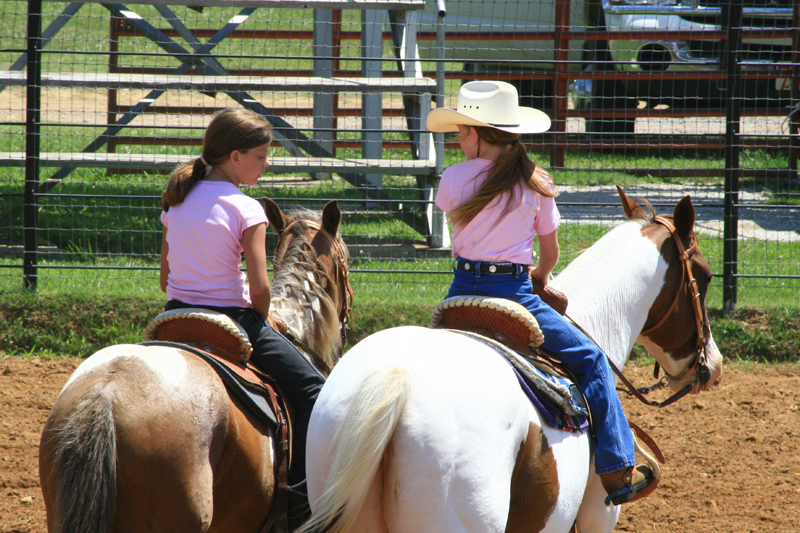
Concussions were reduced by 29 percent and head injuries by 26 percent when the United States Pony Club tightened its regulations for headgear.

Your hair is part of your head measurements, and if you compete in multiple disciplines each requiring a different hair style, you may need to purchase a helmet for each discipline. Photo: Troxel
Hair needs to be styled in a manner in which the safety factor of the helmet is the top priority. Full hair crammed inside a helmet can jeopardize the fit, therefore your protection.
Find the widest part of your head, which will include the prominent rounded area on the back of the head. Typically, the widest part of the head will be about an inch above the eyebrows. Run the measuring tape just above the ears, making sure it encompasses the back “bump.” Using the measurements you obtained, look up the size conversion chart prepared by the helmet manufacturer.
Once you have your helmet in hand, you must try it on to ensure it fits properly. Helmets should not feel uncomfortable, but they should fit snugly enough that they do not slide out of position when riders shake their heads, bounce, or make other vigorous movements. You may need to try several different helmets from different manufacturers to find the perfect fit. Some helmets are designed to fit more of an oval shape head, while others provide a better fit for round shapes. The helmet should have about the same amount of pressure all round.
Some helmets have to “settle.” Your helmet might feel tight when purchased and first used, but the padding still has to mold to your head. If it feels too comfortable the first day out, it could be too big. A helmet that is too big can be hazardous and cause more harm, especially in the event of a fall.
The visor should fall just above and parallel to the eyebrows. There should not be a gap between your chinstrap and your skin, but the strap should just touch the skin, not pinch or chafe it. Make sure that the chinstrap and suspension do not pinch your ears.
Related: The Science of Tack and Training Aids
Helmet Care and Cleaning
To keep a helmet functioning properly, you must take proper care of it. Never store your helmet in your car or a location that is not climate controlled. Temperature extremes, whether hot or cold, can compromise the integrity of the materials that absorb shocks.
Make sure your helmet is dry before you put it away. If the outside is wet from rain or the inside is damp from perspiration, let it air-dry in a location away from artificial heat. When dry, store your helmet in a hat or helmet bag. These come in a variety of styles, but all of them are designed to protect your helmet from dirt and damage.
Use a cleaner specifically for your helmet, and give your helmet a thorough cleaning at least once every week. Household cleansers are too harsh to use on helmets, and the chemicals they contain can compromise the effectiveness of the materials used and also compromise your safety. If your helmet has a removable liner, wash it according to the manufacturer's instructions. If you wish, you can use an antibacterial spray made for helmets to eliminate odours.
Replacing a Helmet
The protective core in your riding helmet is not indestructible. Once it absorbs an impact, it could be completely compromised, even if you don’t see any cracks or visible damage. This means that it can no longer offer you maximum protection. Whether you take a spill while making a jump or drop your helmet on a concrete floor, you need to replace it promptly. Since there is no way to verify if the helmet core’s integrity is still intact, it is not safe to buy second-hand helmets no matter how gently worn they appear to be.
Even if your helmet never comes into contact with the ground, you should replace it at least every five years. The materials used in helmets will degrade over time. As it deteriorates, it will become more ineffective at absorbing impacts and protecting you. In addition, manufacturers are constantly researching new materials and production methods to improve equestrian safety, so you can also take advantage of any technological advances made.
You also should replace your helmet if it no longer fits as it should. This can happen if you change your hairstyle, but it is also common among younger riders who are still growing.
Helmet Styles and Options
Specific events or disciplines can have a narrow range of acceptable helmet styles. For example, English competitors must wear English-style helmets that are covered with a black cloth or velvet, while Western inspired helmets are available for gymkhana events and other Western classes. You will need to review the regulations for your event to select the correct helmet to use in competition, but you have many options when selecting a helmet for recreational or practice riding.
One option you will need to consider involves the type of venting system in the helmet. You can find passive and active venting systems. The active vent system is typically preferred by riders in warm weather or during outdoor events. This system offers greater ventilation as it allows air to pass through. In colder temperatures, passive vent systems are a popular choice.
You also will need to decide on the exterior material. Equestrian helmets are available in velvet and velveteen, leather, suede, and molded plastic, to name just a few.
Keep in mind that the choice of material can limit or expand your colour choices. For example, most manufacturers produce velvet helmets in black, navy, brown, or gray. Plastic helmets can be found in all of those colors, plus pink, green, purple, white or patterns, such as whimsical prancing ponies or stars-and-stripes designs.
Traditional riding helmets were modelled after the hunting caps worn by English fox or stag hunters. This design features a full, rounded brim or visor. These are still commonly used for dressage competitions as well as other English riding events, and dressage riders are required to wear approved helmets in all competitions. Riders also can find helmets that echo a Western theme, with attractive patterns and overlays that look stylish in and out of the show ring. Hunter-jumpers sometimes opt for a plastic shell helmet featuring a decoratively designed ventilation strip running along the center. Eventing riders often choose a brimless “skull cap” that is typically worn with a silk or nylon helmet cover that has a built in flexible visor. Plastic schooling helmets are a popular choice for trail riders and those who are just starting out.
Related: Rider Safety is Always in Fashion
About Helmet Manufacturing Standards
Every competitive organization issues guidelines regarding the standards to which helmets worn by riders must conform. Many nations, states, and provinces issue regulations to ensure that equestrian helmets comply with standards and are worn by competitors at specifically sanctioned events.
In North America, the most prevalent performance standard is written by the American Society for Testing and Materials, and referred to as ASTM F1163. The standard does not deal with design, focusing instead on testing methods and performance criteria. The actual testing falls to the Safety Equipment Institute (SEI) which takes samples provided by manufacturers of every design in every size, and tests them.
Helmets are subjected to rigorous testing, such as being dropped from different angles onto an extremely hard surface. Helmets are normally subjected to falls of at least six feet during testing, and some tests involve dropping them onto a sharp edge.
Equestrian helmets that pass the testing may be labeled as ASTM/SEI certified. Most government regulations or competition rules require that helmets carry this certification. The label has been used fraudulently in the past by unscrupulous manufacturers, so SEI continuously monitors the helmet market to identify illegally labeled helmets. SEI maintains a list of all the models and sizes it has certified, so if you have any questions regarding the authenticity of any manufacturer's product, you can verify certification with the SEI.
The second most common certification in the U.S. comes from the Snell Memorial Foundation (SMF). This organization has traditionally focused on motorcycle helmets, but it also has testing standards for riding helmets. The equestrian helmet standard from SMF is known as the E2001. However, ASTM F1163 is the standard chosen by the overwhelming majority of equestrian organizations across North America.
Summary
Wearing your helmet at all times while on horseback — and not just during competitions — can help keep you safe from head injuries. Ideally, it should also be worn all the time when working with your horse on the ground including lunging, grooming, picking feet, trailer loading and unloading, working in a confined space such as a stall, or at any time when a sudden movement by the animal could put you in danger. You should keep the following information in mind:
- The helmet must fit properly to provide maximum protection.
- You must take accurate measurements to obtain the correct fit.
- Protect your helmet from damage and clean it regularly.
- Replace any helmet that suffers an impact.
- Replace your helmet at least every five years.
- Select helmets that have been certified as meeting the correct performance standard.
- Seek qualified, professional help at your tack store when fitting a helmet.
As the use of equestrian helmets increases, it is hoped that fewer riders will suffer severe head injuries. You have only one brain, so it is important that you protect it as best you can.
Related: How to Find the Perfect Horse Riding Gear
Related: Head First - Horse Riding Accidents and Concussions
Jessica Adcock is a lifelong equestrian and a member of the e-commerce team at Dover Saddlery, a leading retailer of quality English horse tack, supplies and riding apparel for horse and rider at any level.
Main Photo: If your helmet fits well, it should feel snug with the same amount of pressure all round, and the visor should fall just above and parallel to your eyebrows. There should not be a gap between chinstrap and your skin, and you should feel no pinching from the chinstrap and suspension. Photo: Troxel



